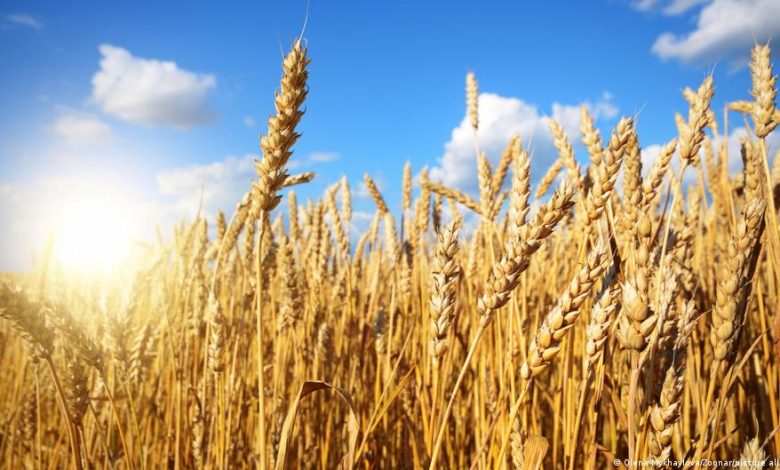Food shortage in Sudan: Facts and Figures

Report – Rehab Abdullah
Since the beginning of the war in Sudan on April 15, international organizations and United Nations agencies have been broadcasting warnings of a food crisis.
They announced that more than 6 million Sudanese are on the brink of hunger in light of the continuing conflict and economic deterioration in the country.
However, the researcher in human rights and international law, Hassan Saeed Al-Mujmar, on his Facebook page, regretted publishing these estimates. The productivity of maize and sesame in Gadarif State alone is sufficient to meet the needs of all the displaced and refugees from all over the country.
He said that the forecasts for the period from October 2023 to February 2024 paint a worrying picture, as about 15 million people are likely to face acute food insecurity (stage three or higher of the Integrated Interim Rating of Food Security), pointing out that it is the highest recorded number that coincides with the harvest season in the country.
The World Food Program reported that more than 19 million people (i.e. 40% of the population) were affected by the sharp decline in food security in Sudan, and it expected that about 2.5 million people would slide into hunger in the coming months due to the war.
Facts and figures
Officials at the Ministry of Agriculture and agricultural and economic experts ruled out a famine in Sudan due to its enormous agricultural potential, with the presence of a number of rivers, groundwater and seasonal rains, in addition to the success of the agricultural season this year and achieving high productivity of food grains, sorghum and millet.
Economic and agricultural experts and Government officials described international organizations’ reports and warnings about a food shortage in Sudan, which foreshadow famine, as incorrect, and are reports that indicate political motivations. They have ruled out the occurrence of famine in Sudan, but there is a deficiency in the Sudanese citizen’s ability to purchase the basic needs.
The Acting Minister of Agriculture, Abu Bakr Osman, spoke about food security in the country, and confirmed there is, on the contrary, a surplus of sorghum and millet crops amounting to 2.5 million tons, ruling out the any food gap as there are sufficient strategic stocks.
In this context, the Governor of the Gezira Scheme, Dr. Omer Marzouk, refuted the expectations of foreign organizations about food crisis and said in his interview with (Sudan Events): “Sudan will not go hungry”. He attributed this to the fact that Sudan enjoys fertile agricultural lands and harvests a good percentage of crops and food grains,” pointing out that Gezira scheme alone cultivates (350,000) fedans of sorghum, equal to 3,500,000 sacks of sorghum.
In addition to planning to plant (300,000) thousand fedans of wheat during the winter season of the current year 2023.
Two months ago, Deputy Director General of the Agricultural Bank of Sudan, Badr Al-Din Fagiri, announced the availability of strategic stocks of sorghum and wheat in Gadarif State.
Food production areas
Sudan has about 5 major irrigated agricultural schemes that it relies on to create strategic stocks of food grains such as sorghum and sesame and to secure part of the country’s needs for wheat, which are Gezira in central Sudan, Al-Suki, Wadi Halfa, Al-Rahad, and the Delta Tokar in the east of the country, and farmers depend on these schemes. Bank financing from the Agricultural Bank in all stages of the agricultural process, from seeds, pesticides, fertilizers, and agricultural machinery, all the way to the sacks for packing the produced crops.
Famine ruled out
On the other hand, specialists believe that the agricultural sector, which Sudan relies mainly on to provide food, faces a number of challenges during this season.
However, agricultural expert Mohammed Osman Al-Subai ruled out the occurrence of a food crisis due to a shortage or scarcity of food in Sudan, and he attributed this in an interview with (Sudan Events) to the fact that this year’s production, in addition to the stock of producers and the state, is sufficient even for the neighboring countries, but Al-Subai underlined the possibility of a crisis in conflict zones in the West due to the inability to harvest due to conditions of security tension in addition to the inability to do traditional commercial work between merchants and citizens, he acknowledged that neither the state nor organizations can guarantee the flow of goods or other goods to war zones, and criticized what international organizations publicized as well as the backing for this by some parties inside the Sudan, and said that some Sudanese and partisans are not honest in their analysis and push it to serve their own or partisan or ideological interests. He said this would be misleading for the ordinary recipient who weighs the statement emotionally. He called for honesty in disseminating information and for placing the national interests above any other consideration interest, particularly during crises and war times.
Shocking information
However, what is painful is that the Deputy Head of the Sudan Farmers’ Association – Rain Sector, Ghareeg Kambal, believed that expectations of famine in Sudan are a reality, and that signs of famine and food scarcity have appeared in some areas suffering from crises and war, pointing out that some citizens will not feel it due to their distance from the areas of production.
Ghareeg did not rule out the occurrence of a food shortage, at the same time he acknowledges the success of the sesame crop and increased productivity, but this comes at a time when some production areas are suffering from low prices because of monopolization and exploitation of merchants and brokers
As for the cotton crop this year, its cultivation was very weak and it achieved weak productivity. As for the important crop that affects the issue of famine, it is sorghum. He stressed that the areas this year were smaller than before, and the success rate of what was planted was about 40%. This percentage was subjected to a very fierce attack from pests, locusts and birds, in addition to the scarcity of rain. Therefore, productivity is certain to not meet the country’s needs, pointing out that this situation occurs even though the need for fodder is significantly low due to the collapse of these sectors under war.
He stressed the importance of focusing on irrigated agriculture and increasing the amount of cultivated area in the future.
The question that still requires confirmation of the occurrence of a food crisis or not remains, but experts and observers are calling on the government to work to prevent the risks of a crisis occurring in the country and secure food for the citizen, as well as fulfilling the supply of food to the Arab world.



